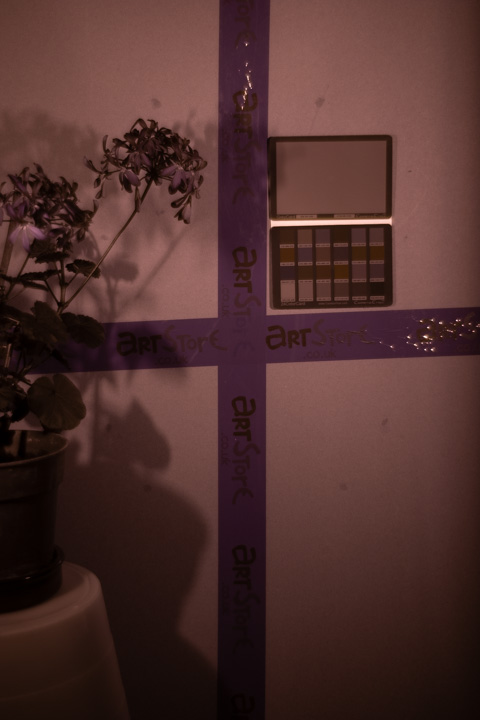I recently purchased a pair of Hoya U340 and U360 UV pass filters, for potential use in reflected UV photography. The filters let through a small amount of IR, so cannot be used for UV photography by themselves, but need to be combined with an IR cut filter. Thankfully I already have a Schott BG40 filter that will cut IR.
So in this post I thought I'd share the results of my test comparing the Hoyas against the Baader U and Schott UG11 UV pass filters.
To understand the results each filter / filter combination gives, it's very helpful to have the tranmission graphs. These can be found online:
- Hoya U340 Transmission graph
- Hoya U360 Transmission graph
- Schott UG11 Transmission graph
- Schott BG40 Transmission graph
- Baader U Transmission graph
All photos were taken with a Petri Kuribayashi 35mm/3.5 lens (which passes UV) at f/4 on my full spectrum Fuji X-M1 at 1/100s and ISO 200. The scene was lit by 2 full spectrum modified Vivitar 283 flashes, one either side.
To start off, here's the scene with the BG40, flashes on minimum power:

Mainly visible light, Schott BG40 filter
Next, the UV comparisons, with both flashes turned up to maximum power (because they output so little UV compared to visible and infrared):

Baader U

U360 + BG40

U340 + BG40

UG11 + BG40
The Baader U gives the best result. The U360 + BG40 isn't far behind, but looses around 1/3 stop of light compared to the Baader.
The U340 + BG40 and UG11 + BG40 both contain deep red visible and also loose more UV. The U340 + BG40 is slighty better than the UG11 + BG40 (smaller amount of non-UV light passed) but both are behind the U360 + BG40 and Baader U. Still, they seem perfectly useable for reflected UV photography to me, just not the best.
Looking at the Schott BG39 Transmission graph, this should work better (than the BG40) with the UG11 and U360 as it blocks more of the deep red these two filters pass. Unfortunately I don't have a BG39 filter to test with.
To finish off, here's the filters without the BG40, here the flashes were both set to medium power:

UG11

U340

U360
As you can see, using the filters without an IR cut filter like the BG40 results in an image mostly comprised of IR. It might seem strange that the U360 + BG40 gives a more pure UV image than the U360 + BG40 while the situation is reversed when the BG40 is omitted. But looking at the transmission graphs it is easy to see why - the U340 passes more deep red (which the BG40 doesn't completely block), while the U360 passes more IR (which the BG40 does block).
To summarise, the Baader U is the best filter for reflected UV photography and justifies its pricing. The U360 + BG40 looks pretty good, and the UG11 or U360 certainly aren't bad when combined with the BG40, but would probably be better with the BG39.


I own a full spectrum converted Canon t2i and love shooting IR around 850nm. But, I would like to shoot with only UV and full range IR, is there a way to pull that off? Landscape use case.
Do you mean shooting images that contain both UV and IR, but no visible light? I think the nearest thing to this would be the ZWB1 / UG11, probably in 3mm thickness. This passes much more UV than IR, but because there is so little UV compared to IR that gets through the atmosphere it should result in an image that is more balanced between UV and IR.
I’m not sure of a lens that would work well for this though other than something really expensive like the Coastal / Jenoptik UV-Vis-IR APO lenses. As most lenses will likely have quite a bit of focus shift between UV and IR.